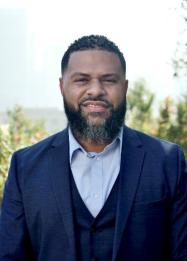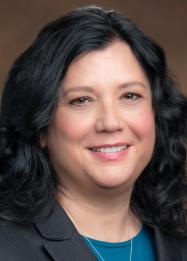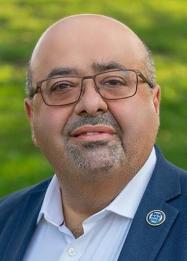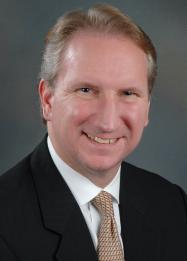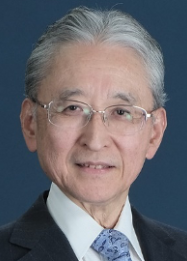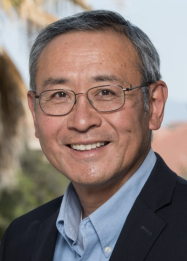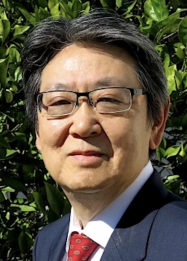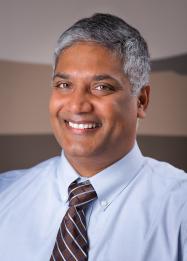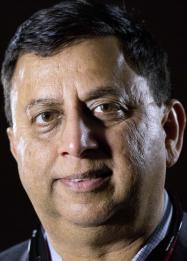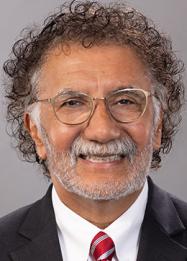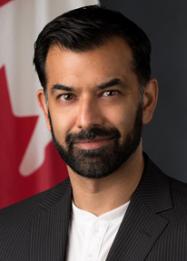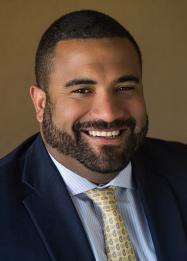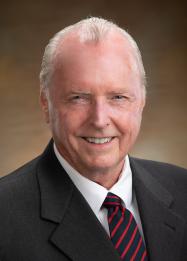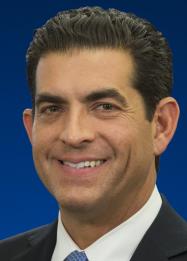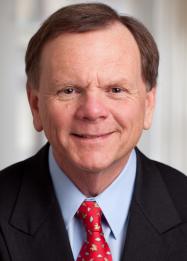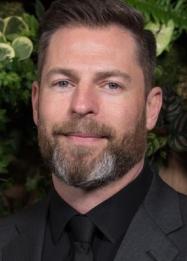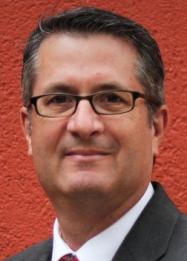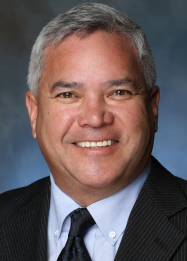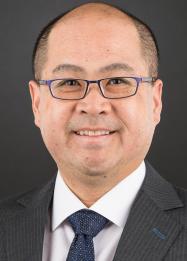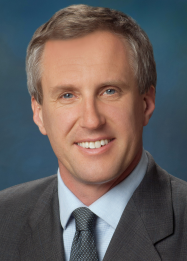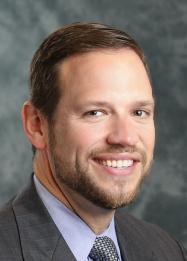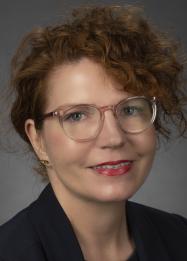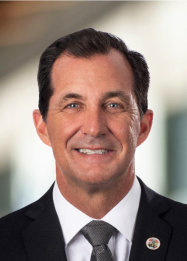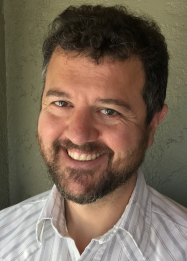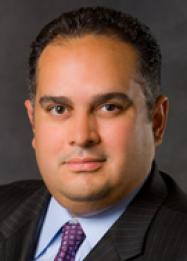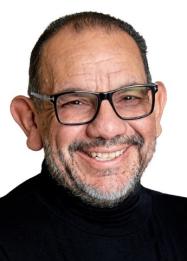CEC Vice Chair Siva Gunda discusses California's clean energy goals, emphasizing the need for 150,000 new megawatts to meet targets. He highlights the CEC's role in leveraging federal funds, including those from the Inflation Reduction Act, to support energy projects and coordinates with state agencies for efficient resource application. Gunda addresses challenges in grid reliability, affordability, and extensive planning. He highlights the importance of storage solutions, CCS, and hydrogen in achieving a balanced energy grid and underscores global collaborations, particularly with India, to enhance climate solutions and renewable energy efforts.
VX2024


In a world where sustainable practices must transcend theory and take concrete form, Sara Neff has taken the helm as a champion for sustainable real estate development and related ESG initiatives as Head of Sustainability for Lendlease Americas. VX spoke with Neff, delving into the specific projects Lendlease is developing in the Americas both privately and with the Department of Defense, and how those projects are setting new standards for sustainable practices.

As the Bipartisan Infrastructure Reduction Act continues to spur and invest in America’s infrastructure – most especially, its many renewable and cleantech projects – the Advanced Technology Vehicles Manufacturing Loan Program (ATVM), best known in its early days for its massive 456 million dollar loan to Tesla, has been revived and has been loaning billions of dollars into projects related to domestic vehicle manufacturing, including medium and heavy duty efforts. VX News shares an excerpt from a recent LACI & Milken sponsored event, featuring Senior Advisor for DOE Arnab Pal speaking with ATVM Loan Program Manager, Chelsea Sexton. The conversation covered the logistics of building and supporting the future of advanced vehicle production, as well as both the pursuit of domestic security in manufacturing, and the many supply chain challenges in need of addressing.

Liane Randolph, Chair of the California Air Resources Board (CARB), highlights In this VXNews interview the significant strides made in transitioning towards zero-emission vehicles (ZEVs) in various weight classes, from light-duty to heavy-duty trucks, as well as encouraging developments in hydrogen and electric ferries. Despite challenges in reducing vehicle miles traveled (VMT), Randolph emphasizes CARB's strategy to support transit and innovative mobility solutions, such as community-based e-bike programs. Also touched upon is the importance of charging infrastructure for medium and heavy-duty trucks, the role of utilities in meeting energy demands, and the ongoing collaboration with environmental justice groups and international partners like Quebec. Overall, Randolph underscores the necessity of collective collaboration and strategic planning to achieve California's ambitious climate goals and for advancing sustainable transportation initiatives

This fireside chat between Josh Haskell and Zev Yaroslavsky took place at the sixth annual UCLA Luskin Summit. Yaroslavsky presented the results from this year’s Quality of Life Index, which annually polls a cross-section of Los Angeles County residents to apprehend the public’s perception of the quality of their own lives. As the cost of living continues to rise and affordable housing remains deprioritized, Zev shared this year’s Survey Findings.

As urban downtowns and their transit serving systems begin recovering from the pandemi’s impact on urban street life, cities have begun blessing innovative ways to utilize their streets and manage their curbs. VXNews shares here excerpts from a recent Curbivore L.A. panel masterfully moderated by Laura Bliss of Bloomberg News that included: Jordan Justus (Co-Founder & CEO, Automotus), Marcel Porras (Deputy Chief Innovation Officer, LA Metro), Debs Schrimmer (Senior Advisor, Joint Office of Energy & Transportation) and Gene Oh (CEO, Tranzito). The panel’s focus; actual examples of the ways varying metropolises are transforming their streets, curbs & public transit systems to better serve the evolving needs of their citizens.

Amidst a flurry of bills, executive orders, and local measures reshaping the housing narrative in California and Los Angeles, assessing the true impact of these legislative endeavors remains a challenge. At a recent Curbivore event, Randall Winston, Deputy Mayor of Infrastructure for Los Angeles, spoke to the attendees hoping to shed light on the ongoing discourse surrounding LA’s housing landscape and the incoming Capital Infrastructure Plan. VX News shares here the full address given by Winston, in which he discusses the implications of Executive Directive 1, the supply-demand paradox facing California, and UCLA's recent acquisition of the Westside Pavilion shopping mall.

As cities grapple with the challenges of urbanization, transportation remains a central concern in fostering sustainable, vibrant communities. In this exclusive interview, we delve into the recent passage of Healthy Streets LA (HLA) with two key figures at the forefront of this transformative initiative: Michael Schneider and Yuval Bar-Zemer. In this exclusive interview with VX News, Schneider, a driving force behind the HLA campaign, offers insights into the significance of this ordinance and its far-reaching implications for urban mobility, while Yuval Bar-Zemer, renowned for his extensive involvement in the Arts District and community initiatives, shares his perspective on the campaign and its potential impact on Los Angeles' diverse neighborhoods.

In a recent exclusive webinar led by Tyson Eckerle, Senior Advisor for Clean Infrastructure and Mobility at the California Governor's Office of Business & Economic Development, participants gained valuable insights into the future of California's hydrogen landscape. Hosted by the Japanese Chamber of Commerce of Northern California, Eckerle delved into the innovative California Hydrogen Hub initiative, which aims to utilize clean, renewable hydrogen to transform transportation, energy, and industrial sectors. Discover the strategic partnerships propelling this initiative forward and explore the roadmap for establishing a sustainable, statewide hydrogen market ecosystem. Don't miss this opportunity to uncover the potential of hydrogen in decarbonizing our economy and shaping a greener future for generations to come.

“ The partnership between (Metro), LA28, LA County, and our federal leaders shows us what can be done when we form a united front. Metro is committed to providing world-class mobility across LA County and to …reshaping transforming and reimagining mobility in our region.”




